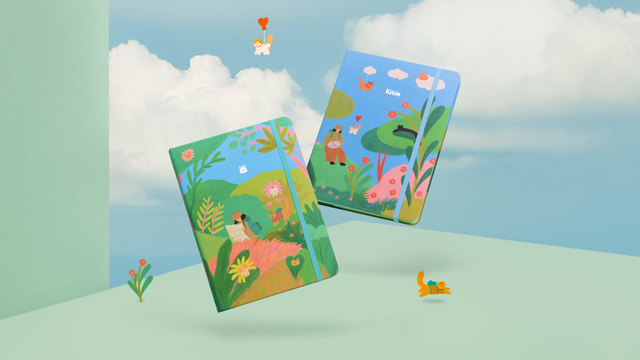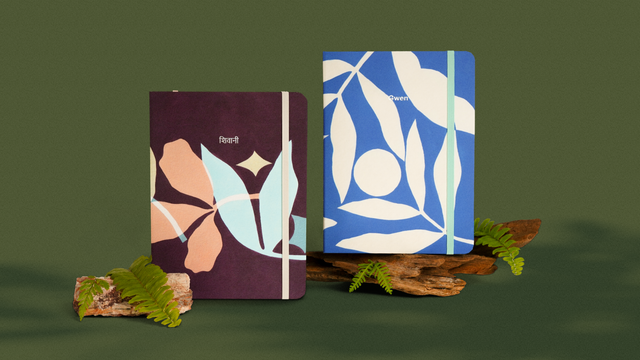Verdigo’s artworks have always incorporated deep and rich colours while jumping from style to style—whether it’s realistic portraits or whimsical creatures, every piece is sure to be vibrant and full of energy. Read on to find out about her process and inspirations.

Where do you draw inspiration from the most?
I think my main inspiration is my own story-writing which I do alongside my art. I do have a whole host of artists that I love too, of course, each inspiring a different element of my own work. There’s so much to master in art, so it definitely helps to have people to look up to and learn from. Otherwise, it can all be so overwhelming!
What do you mean exactly by your own story-writing?
I actually started pursuing art as a means to illustrate my own stories. What has followed in the last few years has been a growing desire to produce illustrations that are good enough to do my creative writing justice, which in turn has pushed my illustration skills greatly too.
I have a lot of stories already plotted out and I seem to always have one capturing my imagination at any given point, so they definitely fuel my art and serve as my inspiration. Illustration requires a lot of diverse skills though—from character design to environment design, you have to bring a whole world to life! So that’s what I meant when I said there’s a lot to master.
What mediums do you prefer to use and what is the best and most challenging part about working with them?
My favourite medium is definitely watercolours. What I love most is what seems to put other people off the most, which is their chaotic nature! I still love to keep that chaotic element in, so I’ve learned not to control them so much, whereas I would rather steer them in the way I want. Learning how they behave under different circumstances is the key to using them well, so with practice and experimentation, you can really bring out the magic in them.

How would you describe the Mossery Sketchbook to others?
I think the main thing for me is how personal and beautiful they are. It’s amazing to be able to choose your cover and emboss a chosen title! It’s wonderful to have a place to be creative that’s also inspiring—as an artist, you get used to having very boring sketchbooks and it can be so disappointing!
Tell us about your creative process—what is it like from start to finish?
I usually conceive an idea from something very simple. I don’t like to put too much pressure on that because it can really stop you in your tracks, especially if you make an idea too elaborate or thought out at this stage.
Then, I draw out what I’m thinking in my sketchbook. If it has merit, I’ll proceed to make a digital sketch in Procreate—just the line work—and I’ll print it out so I can transfer it onto watercolour paper with a light box. The actual painting usually takes a few hours and I like to leave it in view for a few days, just in case there are things I’ve missed out, which can only be revealed in time and some distance.

What is your earliest memory of creating art?
Art was always my favourite lesson in school, so I have good memories of enjoying my time and realising that I had some talent for it. My mum painted when I was growing up too, so I had lots of inspiration from her!
Do you believe in talent? Why?
Yes, I do, people are just good at some things naturally in life and that covers many skills. I have friends who are better at languages than me, better at maths than me—they have a talent or affinity and that’s a part of who they are.
That’s not to say that you can’t learn anything if you want to, but there’s definitely something to be said for talent. It is, by no means, enough to propel you to success; talent is just the seed, hard work and practice are what grows that into a skill.
How do you handle criticism, and what are some of the toughest challenges you've encountered?
I haven’t encountered a lot of criticism, but I’ve been taught how to critique art, so I understand the benefits of it how it’s meant to be done if it’s helpful vs hurtful. I’m my own critic though, I pay careful attention to my failures so I can improve. I think it’s a vital skill to have as a self-taught artist.

How exactly do you do that?
When you make anything at all, it’s a constant learning process. You have to do your best, but you also have to always bear in mind that it’s just another step towards acquiring greater skills—there will always be something you could have done better, and learning from that is key.
Especially with traditional pieces, because you can’t edit it later, you won’t want to make the same mistake twice! As I get closer to finishing a painting, everything that could have been better is always very apparent to me, because you take a step back and you can see things pretty clearly.
As time passes, the greater my skills, and the more critical I become about my own work. I break down my pieces into far more complex elements like tonal perspective, tonal contrast, line weight, palette choice, composition. Sometimes your failures are obvious and you just need to learn more from references or practise repeatedly. Other times, it could be something less obvious, and you really need to pinpoint the elements—it could be something tiny that throws the whole piece out!
I once painted a cat and there was something that just wasn’t right, it was drawn from the front view perspective with it sitting down, and all the obvious elements were right, but I knew there was something missing. About halfway through, I suddenly realised there was no tail! It’s rarely that straightforward, but you always know in your gut when something isn’t right with your piece.
Levelling up in critique is definitely necessary to pursue any form of mastery: you need to learn to be critical of your own work in order to make it the best it can possibly be, because if you can’t identify how to improve your own art on your own, it will never truly improve.

What’s one of the best advice you’ve ever received in life?
Hmm, that’s a tough one. I don’t really have a mantra, to be honest. I just tell myself a lot to keep working hard, use my time well, and never lose sight of my goals.
In return, what advice would you give to your younger self?
I guess my younger self couldn’t have started putting in effort any earlier or else I’d be further along with my skills now. But really, I think the path I took is a part of my art. So I probably wouldn’t change anything, I’d just give myself an encouraging pat on the back for the long road ahead.
If you’re given only one word to describe yourself, what word would it be and why?
I have no idea! Can you describe a person in one word?! I think I have a rich imagination, so perhaps “imaginative” would be it.
Tell us a secret.
I absolutely hate bugs, to the point that I resist opening my windows much because I’m afraid they’ll move in! I’m sure I need more fresh air in my life, but the thought of bugs just make my skin crawl!
-
You can follow Verdigo's works on Instagram or purchase her art on Etsy.




